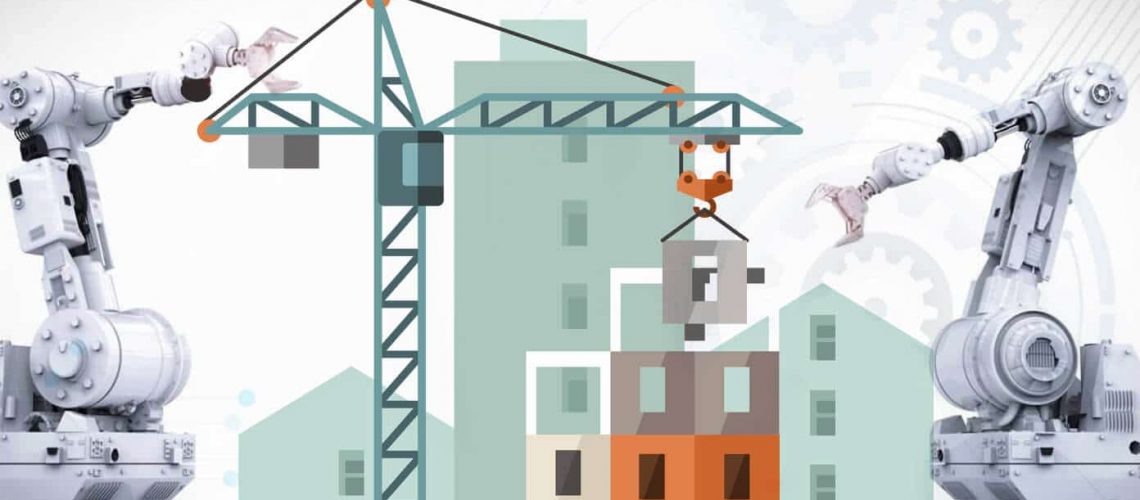Has the age of robotics in construction finally arrived? Yes, most definitely. And robots offer a chance to advance an industry that needs it. Much as BIM transformed design, some robots offer a way to do the work much better than the old ways while extending careers too-often cut short by injury.
Two interesting robots are available now from one New York-based company, Construction Robotics. The MULE, or “material unit lift enhancer,” helps a mason maneuver blocks into place with great precision. The mason controls the machine, but no longer has to lift the blocks into place. According to the company, the MULE can handle material up to 135 pounds, allowing use of much larger and custom block sizes than would be appropriate for a human to lift.
This feature highlights one strong advantage of bringing robots onto the job site: worker health and safety. Construction is a physically demanding job and many workers end careers after a short period of time due to injury. With a tool like the MULE, the mason can focus on the precision aspects of the job, such as striking and quality control, while enduring much less old-school wear and tear on the fragile body.
Construction Robotics also makes the SAM, or “semi-automated mason.” This machine is more sophisticated, with a conveyor belt, concrete pump, and robotic arm. It can butter and place the block at a much higher rate than a human—up to 3000 bricks per day.
Humans are still needed for site preparation and to keep production going, feeding the conveyor and pump, for example, but the machines make the process more efficient, as well as safer.
Another company with robots in use is Advanced Construction Robotics of Pittsburgh, Pennsylvania. The company makes the TyBot, an automated rebar-tying robot that was developed for bridge projects and can be used on most flat projects, the company says. After it’s set up on the screed rails, it proceeds automatically, sensing each junction and tying up to 1000 ties per hour. The company’s IronBot is a rebar carrying and placing robot. Both machines speed production while shifting human labor to more body-friendly work, such as on-site decision making, and fill a growing need for labor as the entire construction industry faces a serious labor shortage.
At the finishing stage, a company called Canvas makes a robot that applies drywall finishes, another labor-intensive job. The company says “We deliver unrivaled quality, speed, and predictability by putting robots in the hands of skilled workers.”
Improving production speed and delivering consistently high quality is, of course, what robots are supposed to do, and that naturally threatens the people who do those jobs now. Fair enough, but it appears that those jobs are not going the way of the village blacksmith: they’re transitioning to being skilled machine operators, a safer, more secure, and more body-friendly way to get work done.
Considering the staggering need for new construction just in the United States, and Congress finally addressing that pent-up need, maybe these machines will attract younger workers like gamers who have been developing needed skills for literally their entire lives. According to this study, U.S. firms need 430,000 additional workers.
These robots are just a few of the fascinating machines that are in use and coming soon.
